Answers to questions on reports (oncology section)
21-10-2020
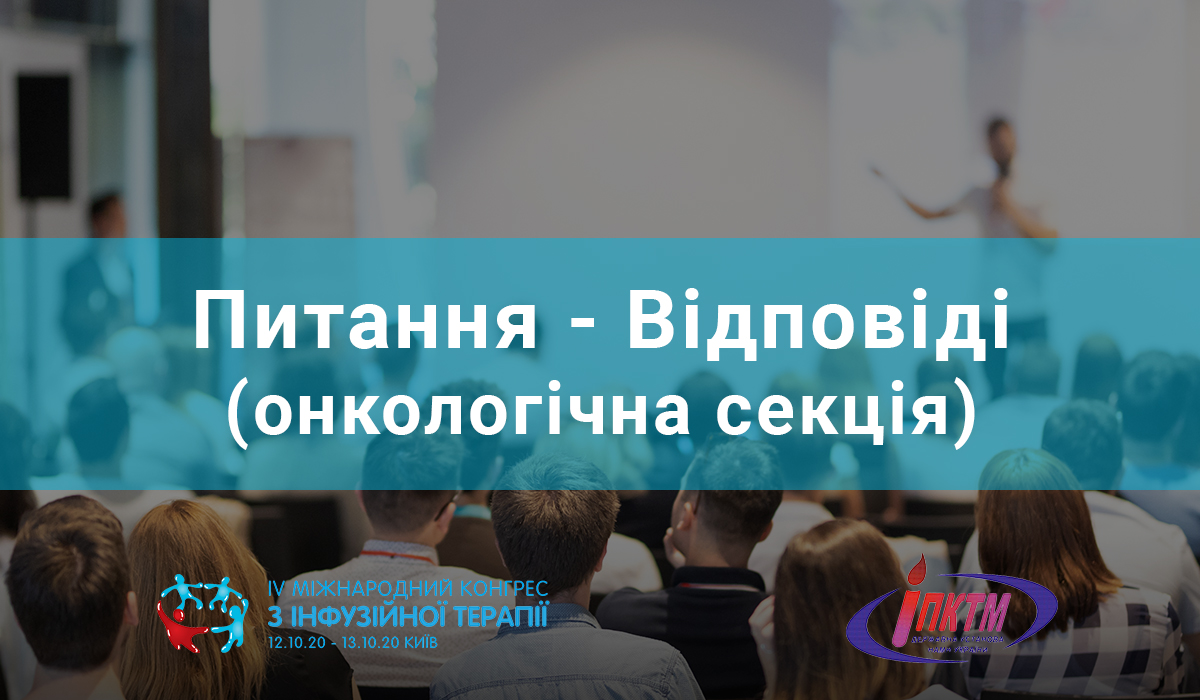
Dear participants! During the reports of the section of specialists in oncology, many questions were received, for which we are very grateful!
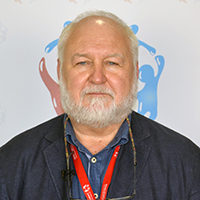
"Oncology of the beginning of the XXI century: elements of personalized cancer treatment", Kovalev Alexey Alekseevich, 12.10.2020
1. What is the role of current medical reform in the Ukraine for development of personalized oncology?
The current reform in Ukraine will not affect the direction of personalized therapy, I think. First, our state does not treat personification as a standard in oncology treatment yet, therefore the state is not obliged to fund it. In addition, the reform, in my opinion, does not pursue long-term goals and is aimed at solving the current problems of restructuring and financing of medical institutions, so it does not address long-term issues. A good idea from the state could be the development of molecular oncology and the establishment of appropriate laboratories with the ability to perform genome sequencing and other molecular tests.
2. Alexey Alekseevich, in
your opinion, what are the perspectives for the development of a personalized
approach to cancer treatment in Ukraine? Should we compare world standards and
our realities.
Even if the issues of personalized cancer therapy in Ukraine will be resolved, then it will be done more slowly than in countries with developed health care systems. In the EU countries and North America, this direction is also not a standard. Molecular profiling, if I'm not mistaken, is covered by government in Canada only. Our patients, paying for the complex molecular tests, finance private laboratories in Western countries. That’s the perspective so far.
3. Alexey
Alekseevich, can we talk about the readiness of the doctor-patient to move from
the classical to the personalized approach of treatment?
Yes, I think. The readiness of both doctors and patients is surprisingly high. Stops the research cost only. If the price of molecular tests decreases, so the number of patients who might request these techniques will increase.
4. Alexey
Alekseevich, can a personalized approach completely solve the problem of
resistance the tumor to therapy?
Not yet, I think. I would emphasize that the cancer therapy personification, as it is positioned today, is still a dream but not a reality. When I describe the tumor, I can see a steady bias towards genetics, genomics, transcriptomics. We try to characterize the cancer cell itself in terms of its mutations, forgetting that not every mutation is oncogenic because the cell does also have normal mutations-passengers. We do ignore the microenvironment of the cancer cell, the state of the immune system, the state of the macroorganism. This is still a one-sided approach. I would even say - some skew. Let us agree that although we have learned a great deal about the mechanisms of carcinogenesis in the post-genomic era, the true causes of cancer are not fully known to us. We struggle with the consequences. We have already formulated the concept of personification. This is certainly correct, but still there is no complete picture. So, the problem of resistance will not be overcome yet.
Mankind has solved the problem of all complex diseases not by treating them, but by prevention (tuberculosis, malaria, polio, smallpox). When we understand the causes of malignant tumors, when we learn to prevent them - then we will solve the problem.
5. In your opinion,
should there be compounding in every oncology center?
I am absolutely convinced that compounding should be in every cancer center. In what form? Better in civilized. A modern center cannot exist without compounding. The proof is the whole civilized world’s example. In this sense, we are very far behind them. So, we are talking about personification, but cannot organize the compounding.
6. What could be
the prognosis of tumor treatment with a personalized approach compared to the
traditional one?
There are many examples of clinical studies that personalized treatment based on molecular profiling improves long-term outcomes over the standard approach, sometimes up to 40%. When it is considered that we are talking about personification mainly in patients with metastatic progression, it is very much. Yes, it is a palliative treatment with no hope of a complete cure, but the results of treatment of this group of patients are getting better every year. Examples are patients with ERBB2 metastatic breast cancer, EGFR and ALK non-small cell lung cancer, BRAF disseminated melanoma. 5 years ago it was the personification of treatment - today it’s the standard. The design of clinical trials is also changing. Previously, the study recruited a huge cohort of patients united by one anatomical location, today the inclusion criteria depend on the presence of rare mutations, tomorrow will conduct studies for one patient. Anyway, we go towards personification.
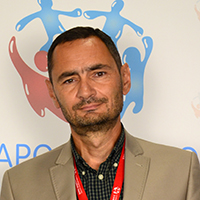
"Medical staff mistakes in infusion anticancer therapy: is it possible to prevent them?", Zotov Alexey Sergeevich, 12.10.2020
1. Alexey Sergeevich, are there some statistics of the frequency of mistakes made by medical staff in our country? Some register, for example?
The maximum that can be expected in official statistics is the data obtained by pharmacovigilance authorities. According to the Order of the Ministry of Health on December 27, 2006 No. 898: "Pharmacovigilance is a process associated with the identification, collection, assessment, study and prevention of adverse reactions, adverse events after immunization / tuberculin diagnosis and any other issues related to the safety and efficacy of drugs, vaccines, tuberculin". You can get familiar with these statistics on the Ministry of Health State Expert Center website. As it is clear from the definition of the tasks of pharmacovigilance, some of the adverse events in the use of drugs will be caused by personnel mistakes. However, which part is unknown. I do not know about the maintenance of any statistics of personnel errors (especially the registry). Taking into account that the vast majority of errors are not detected without special monitoring, and no more than 10% are reported (in civilized countries!), It is easy to foresee that the real situation can be assessed very roughly.
2.
What percentage of mistakes in Ukraine, in your opinion, can be associated with
an incorrect calculation of the dose of cytostatic dilution?
I don’t have any factual data on which I could base my opinion. I won’t guess.
3.
Alexey Sergeevich, what kind of legal support does a doctor have?
None. If in civilized countries the legal claim of a patient to a medical care provider is a legal duel between two lawyers: a representative of a patient and a medical institution, then here in Ukraine it is just a statement to the police against you, a specific resident Vasily Ivanovich Petrenko. And you will solve this problem by yourself, wasting your own resources (time, nerves, etc. ...). Of course, it happens also in a different way, but even the most unfounded claim will not add health to you and won’t allow you to live peacefully. In general, despite the presence in Ukraine of specialists in medical law, the doctor (as well as the patient) remain legally unprotected. Many publications and tips are available on the topic "how to behave if you are stopped by the police", but have someone has met "advice from a lawyer" what to do if you are summoned (to the head physician, to the clinical expert commission of the city health department, to the police , prosecutor's office, court, etc.) about the patient's statement? It is high time to discuss the problem in a “round table” format.
4. What are the
prospects for the development and implementation of Ukrainian protocols and
recommendations into practice?
Misty. I raised the problem of standardization of medical care in oncology in almost every report. Of course, there is no need to develop "Ukrainian" protocols, everything has already been done by foreign colleagues. How to implement is the question. The main problem that I see here is who will monitor their implementation?
5. Your opinion on
the situation in our healthcare facilities, when the doctor is forced to change
the chemotherapy schemes or replace drugs in the scheme, based on the presence
/ absence of cytostatics in the purchase.
No one expected an answer from me: "my opinion is okay", I hope? This is bad, and the effectiveness / safety of treatment is getting worse, and social tension in the doctor-patient chain is grows up. Do I need to explain that the majority of patients in this extremely unfavorable situation for themselves will pour out indignation (explicit or latent) on the attending physician Petrenko, and not on the employee of the anthracycline subdivision of the Oncology Department of the Procurement Department of the Tender Committee, who then did not make a bulk-purchase of the drugs needed? Therefore, I personally would discuss the situation with the patient, explaining to him why it turned out that way. Discuss solution options: replacement, purchase, treatment in another institution, participation in a trail, etc. And no "the doctor is forced to change the scheme"!!! only a collegial decision of the consultation of doctors, with the signatures of the heads of departments (and could be good, with the argumentation of such "replacements" as well).
6. Is medical compounding just Chemoteka or are there some others?
Others are unknown to me.

"Infusion therapy of an oncological patient: PROS and CONS", Kobelyatsky Yuri Yurievich, 10/12/2020
1. Is there an ideal solution for infusion therapy?
The solution is close to an ideal one, which is as close as possible in composition to blood plasma and has alkalizing components such as malate and acetate. That is, these are balanced crystalloid solutions.
2. What solution is
the most optimal for infusion therapy in oncology?
Taking into account the characteristics of cancer patients, age and multiple concomitant pathology, it is necessary to start with saline crystalloid solutions and control tissue perfusion during the infusion by diuresis, hemoglobin, hematocrit, osmolarity, as well as by biochemical parameters.
3. Do all cancer
patients need fluid therapy? How to determine who to drip and who don’t?
In order to determine the need for infusion therapy in cancer patients, it should be borne in mind that often signs of an oncological process are microcirculation disorders against the background of chronic inflammation and water-electrolyte disturbances. Infusion therapy is performed primarily to eliminate dehydration, metabolic acidosis and electrolyte disturbances, which must be monitored constantly. The state of euvolemia is a necessary prerequisite for optimizing the homeostasis of a cancer patient. If there are no water-electrolyte disturbances, then the patient cannot drip, especially if he can drink.
4. Which solution
in your opinion is the safest?
Crystalloid solutions, but not saline, are safer than colloids, especially hydroxyethyl starch derivatives, which now have great potential risks.
5. Is there
evidence-based medicine data about the Xylat antitumor efficacy? What’s the
NCCN, ESMO, ASCO opinion?
I have not seen such data in international recommendations, but at the current stage of the evidence-based medicine crisis, experience can provide more food for thought, given that often the evidence-based principles don’t work in the clinic.

"Personalized oncology as a global unifying goal of clinical experience, unified protocols and modern technologies on the way to victory over neoplastic processes", Gerasimenko Olga Vasilievna, 10/12/2020
1. From the point
of view of personal experience, does a personalized approach affect the
treatment outcome, or a standard, protocol-based does?
A personalized approach always gives the best results, since it takes into account the molecular genetic characteristics of the tumor, the somatic status of the patient and modern recommendations on the types of drugs that can be used, their dosages, as well as extensive support therapy to minimize the side effects of treatment. But, unfortunately, there is always "financial toxicity" to the patient. So, molecular techniques, as well as modern drugs, are not always provided free of charge. There are some movement forward in this direction thanks to free testing of patients at the expense of pharmaceutical companies. There are programs for lung and bowel cancer, for example. There are also some free targeted drugs in cancer centers.
2. Do modern
protocols solve all the issues in the treatment of cancer patients?
It is my deep conviction that the protocols have made the life of the practicing physician extremely easier. Yes, they can direct you on a strategically correct path, give you options, however, YOU, as a doctor, will have to make a choice. If the only one protocol could be used to comprehensively treat a patient, then our foreign colleagues would have replaced expensive doctors with an artificial intelligence for a long time ago, I think.
3. Good afternoon,
Olga Vasilievna. How is personalization implemented in Ukraine?
Personalization in our country is just beginning to occupy its own niche, but the pace of development is quite high. Now there is no oncologist who, to one degree or another, would not use the principles of personalization in his practice. Over the past 2-3 years, the number of publications on this topic has been striking, laboratories that perform molecular genetic tests are developing, and centers for personalized pharmacy appear. I think that this direction is extremely promising in the fight against cancer.
4. On what resource
can we get familiar with the unified Ukrainian protocols?
On the Ministry of Health of Ukraine website, order 554. But this is the basis ... And each of us can create and timely update local protocols in our medical institution.
5. Deviation from
the therapy standards, when is it possible, in your opinion?
Deviation from the standards of treatment is possible when the patient does not have the opportunity to purchase the necessary drug due to its high cost (immunotherapeutic or targeted drugs), or when, despite the age (over 75 years), the patient is in a preserved somatic status and can be radically treated. Also, this option takes place when the patient has already exhausted all lines of treatment and goes into clinical research. I believe that it is possible and necessary to deviate from the standards when your actions will definitely not harm the patient! And you will make this decision together with the patient, remaining as honest as possible with each other!
6. What are the
perspectives for personalized chemotherapy in our country?
There are prospects for personalized chemotherapy in our country - centers for personalized pharmacy are already opening, where the required dose of a particular drug is calculated for the patient with maximum accuracy, taking into account the localization of the neoplastic process. Molecular genetic testing centers do not stand still, which offer not only research for those already ill, but also broad screening programs for healthy patients. We do not stand still, and this is the main thing!
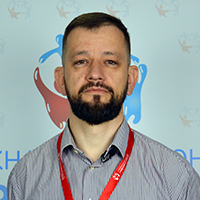
"Gold standards for CT diagnostics of oncological diseases", Titorenko Roman Sergeevich, 10/12/2020
1. What is the advantage of 3D reconstruction in diagnostics over conventional ones?
3D reconstructions are an additional technique that allows you to see and evaluate the pathology more clearly. This is relevant in traumatology for visualization of fractures, especially complex ones, with displacement. Also, 3D reconstructions are used to visualize the vascular bed of organs and systems - the so-called CT angiography. But I’d like to emphasize that the diagnosis is never made by 3D reconstructions. Pathology is primarily assessed on primary, baseline images. Moreover, you need to understand that 3D images are created by software, and any, even the most perfect program can make mistakes, especially if the initial data is not very high quality. For example, there are artifacts (motoric, metal, etc.), poor contrasting, patient’s excessive weight. In such situations, the program may incorrectly calculate and build a 3D image.
2. Is there a
difference in contrasting with more expensive contrast media and less expensive
ones?
The quality of contrasting depends on many parameters, for example, the concentration of iodine in the drug, the rate of injection of the drug, the volume of injection, but certainly not on the price of the drug. In my practice, I have tried all contrast agents known in our market and I want to note that contrast agents from domestic manufacturers significantly gain in price over foreign ones and are absolutely not inferior to them in quality.
3. Is there a
perfectly safe contrast?
No, it doesn't exist. Anything that is introduced into the human body, be it parenteral or oral, is potentially dangerous.
4. If all cancer
patients need to be contrasted, what are the contraindications for such
patients?
First of all, it is iodine intolerance, a history of severe allergic reactions to iodine-containing drugs. A relative contraindication is thyrotoxicosis, since when it stops and the level of thyroid hormones is normalized, the study can be carried out.
5. What contrasts are worse in terms of the
effect on the kidneys?
If we are talking about intravenous contrasting during computed tomography, then these are ionic high-osmolar contrast agents.
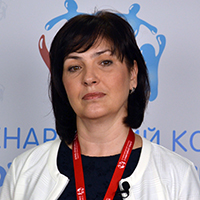
"Chemoradiation therapy for locally advanced oropharyngeal cancer", Seryogina Natalia Mikhailovna, 10/12/2020
1. How many oropharyngeal cancer patients go through your clinic?
For 5 years of operation of the clinic, 72 patients with oropharyngeal cancer have been treated.
2. How many
procedures with spiral tomotherapy do you perform per year?
By treatment procedures: we use the methods of integrated boosts on the affected areas, therefore the number of procedures, i.e. radiation therapy sessions, usually 33. Radiation therapy plans have some advantages when treating with the Tomotherapy system, therefore, we do plan patients with this localization on the Tomo HD system.
3. What
chemotherapy scheme do you most often use for oropharyngeal cancer?
Most often, for definitive chemo-radiotherapy for oropharyngeal cancer, we use a scheme with cisplatin 100 mg / m2 every 21 days.
